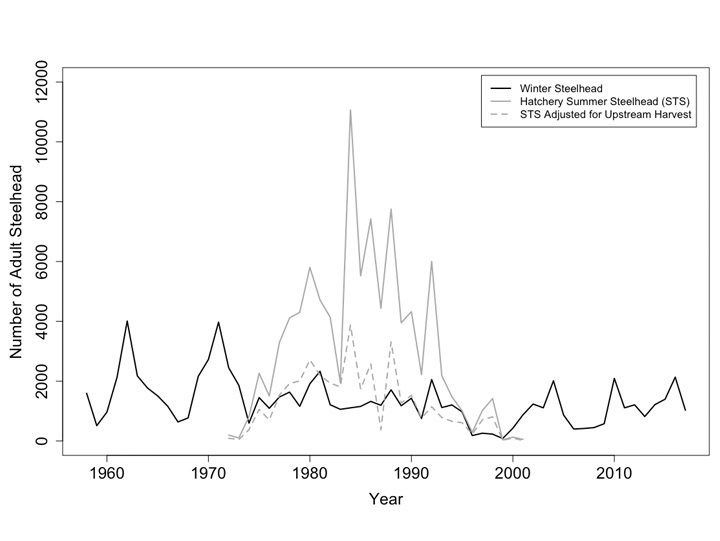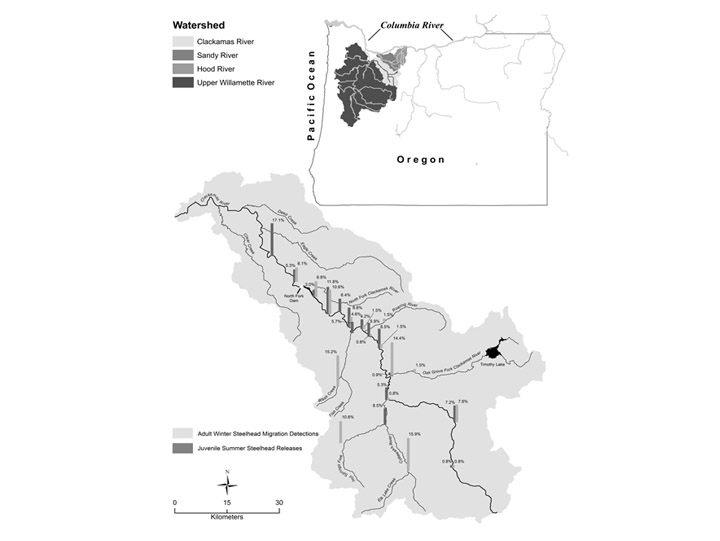A Natural-Origin Steelhead Population’s Response to Exclusion of Hatchery Fish
It is asserted that reduction or elimination of hatchery stocking will increase natural-origin salmon and steelhead production. We conducted an analysis of steelhead Oncorhynchus mykiss population census 22 data (1958-2017) to determine whether elimination of summer steelhead stocking in the upper Clackamas River in 1998 increased the productivity of natural-origin winter steelhead. A Bayesian state-space stock-recruitment model was fit to the adult steelhead dataset and productivity was estimated as a function of hatchery-origin spawner abundance, as well as other environmental factors. When used as a predictive variable in our model, the abundance of hatchery summer steelhead spawners (1972-2001) did not have a negative effect on winter steelhead recruitment. However, spill at North Fork Dam, the gateway to the upper Clackamas Basin, and Pacific Decadal Oscillation (an index of ocean conditions) were both negatively associated with winter steelhead recruitment. Moreover, winter steelhead abundance in the upper Clackamas Basin failed to rebound to abundances observed in years prior to the hatchery program, and fluctuations in winter steelhead abundance were correlated with other regional winter steelhead stocks. Our assessment underscores the need for studies that (1) directly quantify the effects of hatchery fish on the production of natural-origin salmon and steelhead, (2) empirically test published theories about mechanisms of hatchery fish impacts on natural-origin populations, and (3) document population responses to major changes in hatchery programs.

